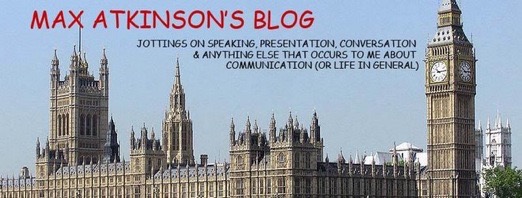
Earlier today, I followed a link on Twitter via @MartinShovel (to whom thanks) that led me to
FRIENDorFOLLOW, a useful resource that enables you to tell at a glance which of the people you're 'following' on Twitter are (or are not) following you.
Although I 'follow' quite a number of journalists, it had never occurred to me to check on which of them might be following me. Quite a while ago, however, I'd noticed a couple of things about the way they use Twitter:
- They do quite a lot of 'chatting' between themselves.
- They don't seem to make as much use of the RT function on Twitter (even between themselves) as many of the other people I follow.
Inspired by
FRIENDorFOLLOW, I've just done a bit of research into how journalists are using Twitter. Although they're very keen on tweeting news of their latest articles, broadcasts and blogs, they're not very keen at all on 'following' others.
'Follow' : 'Follower' ratios
The results from ten randomly selected British journalists can be inspected in the table below, from which you'll see that, in absolute numbers, Andrew Rawnsley of The Observer is the most diligent 'follower' - though the 262 people he 'follows' only amount to 2.2% of his 12,810 followers.
Top score on this ratio goes to Steve Richards of The Independent, who follows 4.8% of his 1,806 followers. Bottom score is BBC political editor Nick Robinson, who only follows 1 person (@WilHarris, who describes himself as a 'Recovering journalist. Certified media addict. Alleged entrepreneur').
Journalist | Follows | Followers | % |
Steve Richards (Independent) Benedict Brogan (Telegraph) John Rentoul(Independent) Andrew Rawnsley (Observer) Paul Mason (BBC) Jonathan Freedland(Guardian) Daniel Finkelstein (Times) Jon Sopel (BBC) Laura Kuenssberg (BBC) Nick Robinson (BBC) | 87 166 138 262 77 88 75 58 241 1 | 1,806 4,622 4,733 12,081 4,578 5,744 7,087 6,545 32,505 22,598 | 4.8 3.6 2.9 2.2 1.7 1.5 1.0 0.9 0.74 0.004 |
(Thanks to observant journalist Jonathan Freedland for drawing my attention to an error involving a misplaced decimal point that had put Ms Kuenssberg top of the table when it was originally posted. This has now been been corrected).
Who are followed by journalists?
Although more research is needed on this, the initial results came up with the unsurprising finding that the overwhelming majority of those followed by journalists are other journalists, political bloggers and politicians past and present.
So should the rest of us carry on following them if they don't follow us?
This depends entirely on what you want or are hoping to get from Twitter. But I certainly don't have any immediate plans to go into a huff and 'un-follow' all those journalists who are misguided enough not follow me (i.e. most of them) - for a number of reasons:
- Following them is an easy way to keep up with what columnists and commentators are saying (except, of course, those hiding behind The Times's paywall).
- Sometimes their articles are interesting enough to inflict on your other followers via an RT.
- The possibility of using Twitter's @Journalist'sName 'reply' facility means that you're in with a chance of letting them know what you think about what they're saying.
- The same facility also means that you can try to draw their attention to your latest blog posts. Most of the time, of course, they take no notice - but you only need an occasional RT from one of them to see a massive increase in the numbers visiting your own blog, some of whom may actually be tempted to become regular readers.
- And that's good enough for me.
P.S. More promising numbers:
Since posting this earlier today, I'm grateful to a number of journalists for responding to and/or showing an interest in the above table. Interestingly, all of them score much higher on the Follow:Follower ratio than any of those in Table (1) above.
Matt Roper - @mattjroper - digital news editor of STV is way ahead of the field and is the only journalist I've come across (so far) who follows more people than those who follow him. Earlier in the day, he'd tweeted "Far too many journalists use Twitter to talk rather than listen."
Mr Roper's only serious contender, Neal Mann - @fieldproducer - who also tweeted '..only following a small number really misses the point of Twitter', is another digital specialist - which probably explains why they are both so far ahead of journalists specialising in print and broadcasting media:
| Journalist | Follows | Followers | % |
| Matt Roper (STV) Neal Mann (Sky News) Patrick O’Flynn (Express) Mary Ann Sieghart (Independent) | 1,878 1,730 207 266 | 1,307 2,356 930 1,427 | 144.0 73.4 22.25 18.6 |


